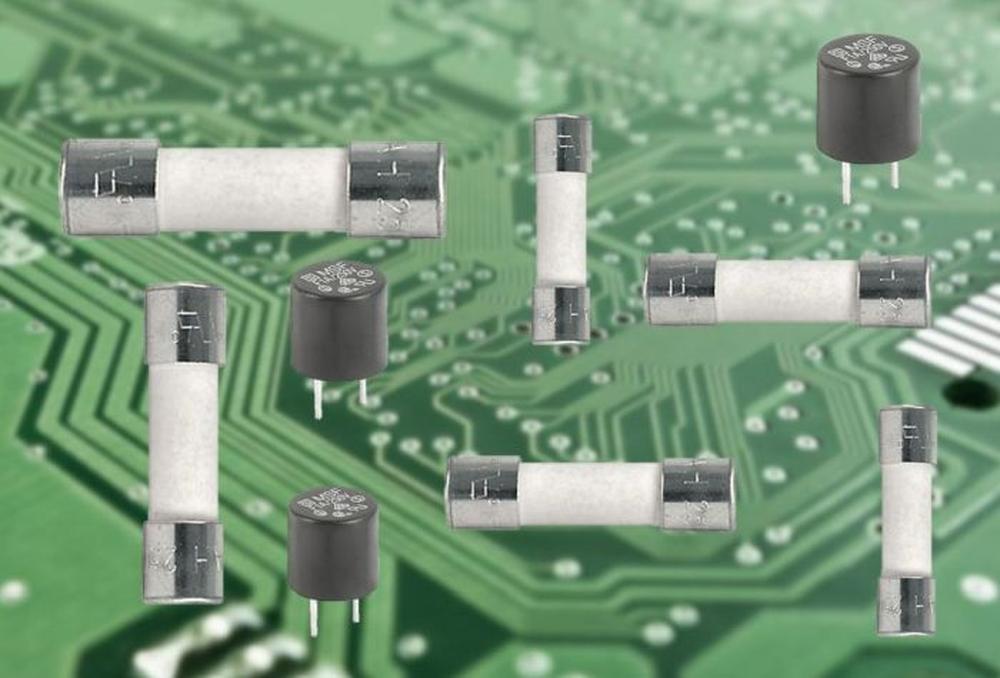How Fuse Works
Fuse contains a metallic element which is heated to its melting point by the excessive current. The element is designed in such a way that it melts within defined times for various overcurrent values.
Once the element melts open, the circuit voltage across the two ends of the open element creates arc. The fuse is designed so that the arc burns only inside it and it is extinguished without damaging the fuse housing (glass/ceramic tube, plastic case, etc.). The arc is extinguished when the element ends burn back far enough that the arc cannot be maintained across the increasing gap.
Some fuses employ a “filler”, typically silica sand to help disrupt and extinguish the arc.

What to Consider?
Rated Current, In
- For fuse, according to EC 60127 and EN 60127, the rated current corresponds to the continuous current through the fuse without interrupting the fuse.
- For fuse, according to UL 248-14, the rated current corresponds to the current, which would interrupt the fuse-link already after a few hours. The current which, according to UL, can flow constantly without interrupting the fuse-link, is approx. 0.75 In.
Voltage rating (AC or DC voltage)
The voltage rating of the fuse must be equal to, or greater than, the circuit voltage. If circuit voltage is considerably lower than fuse rated voltage, voltage drop on fuse has to be taken into account. When metal element approaches melting point, voltage drop increases.
The circuit voltage must be sufficient to allow current that is capable of interrupting the element.
Ambient temperature
Fuse current ratings are measured at 23°C (IEC) or 25°C (UL). In practical applications, the fuse’s ambient temperature may be significantly higher, especially if the fuse is used in an unexposed fuseholder or mounted near other heat generating components. For such applications, In has to be de-rated according to manufacturer recommendation.
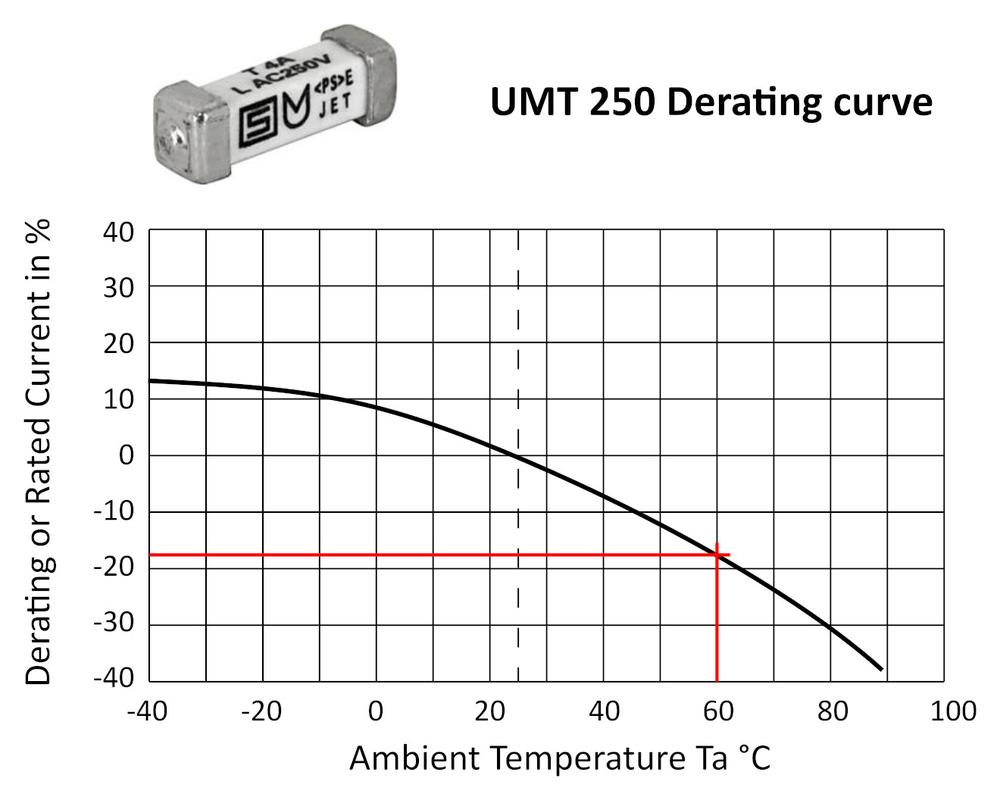
Overload current and opening time
The time-current-characteristic indicates the relation between the time required to melt the element (pre-arcing time) and the current.
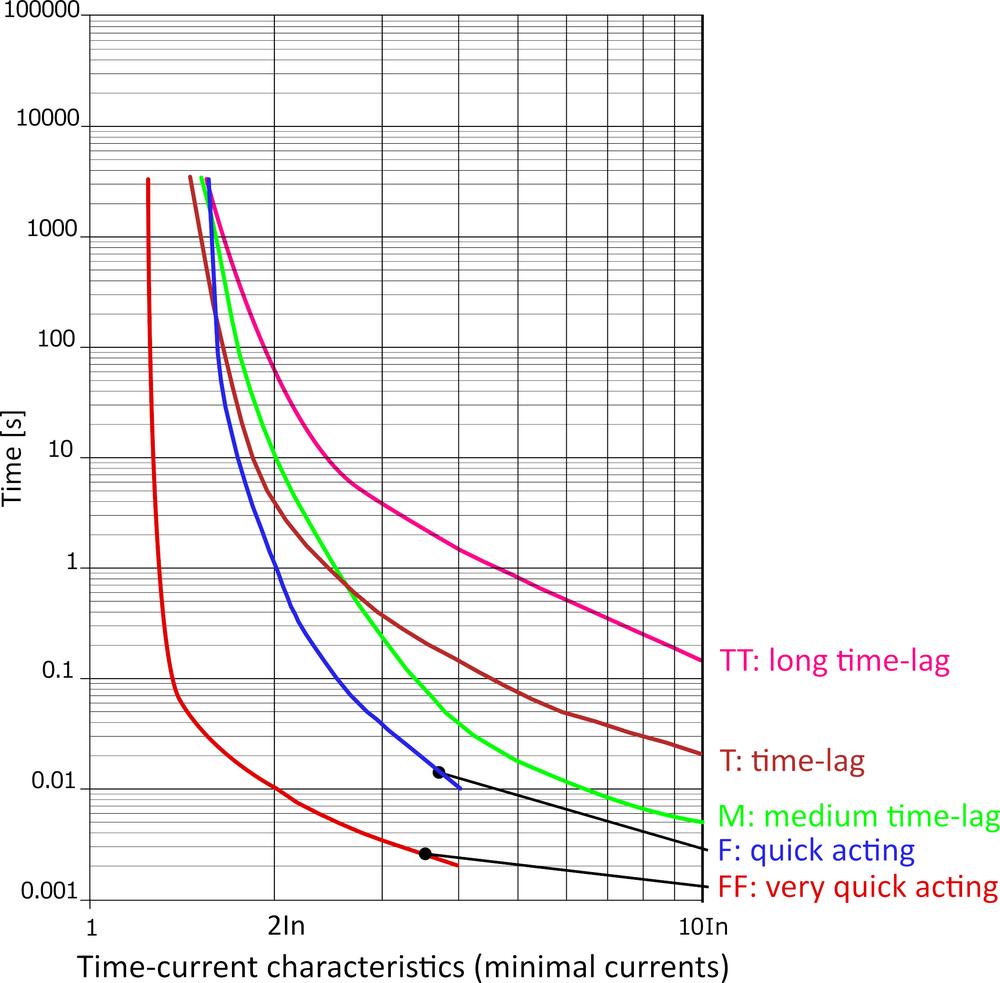
Actual time-current characteristic is between Imin and Imax curves.
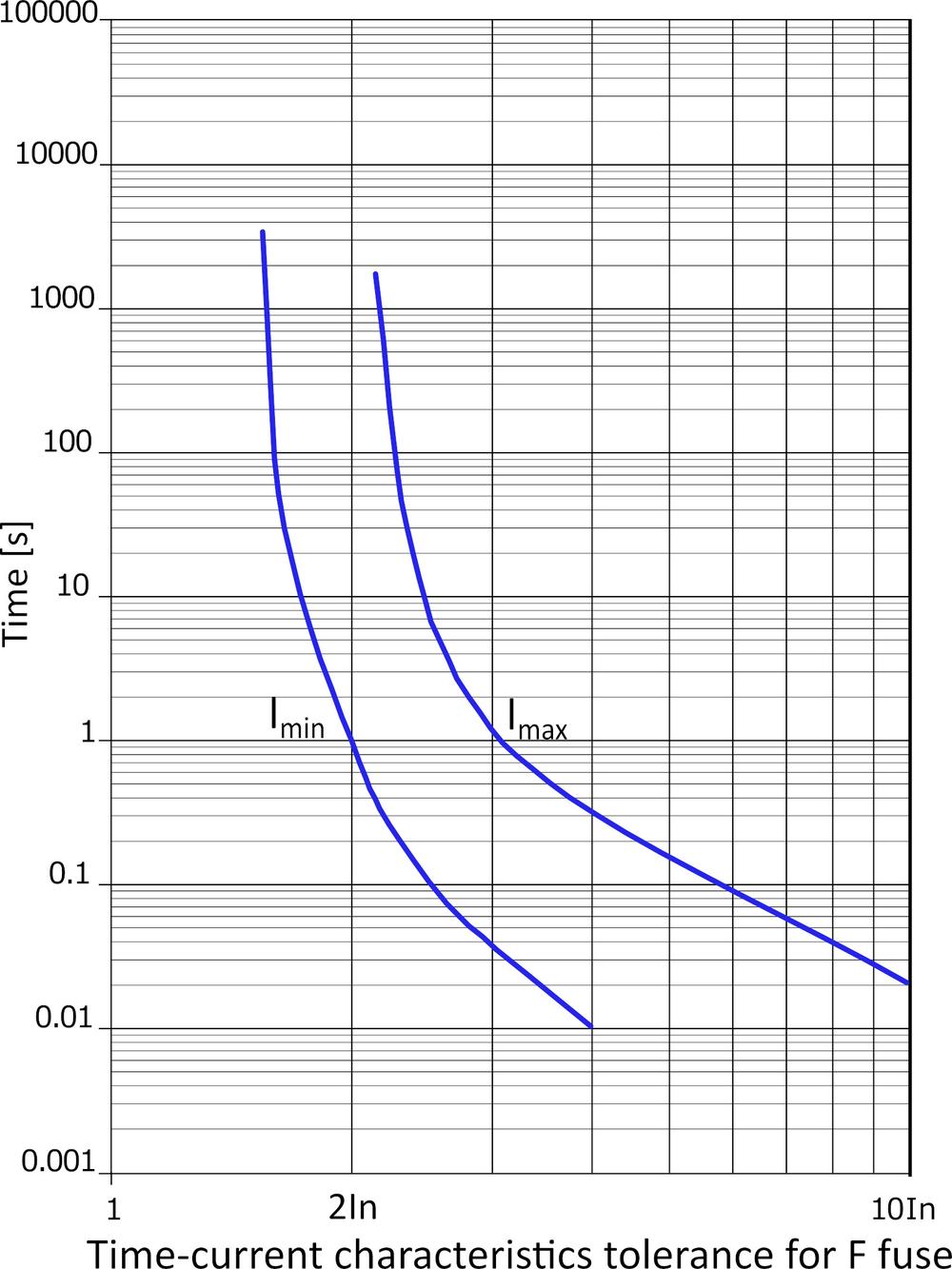

Breaking Capacity
A fuse must be able to open the circuit under a short circuit condition without endangering its surroundings. The fuse breaking capacity is defined as the maximum current at rated voltage, which the device can safely open without rupturing. It must be equal to or greater than the available short circuit current of the circuit.
Breaking capacity for 5x20mm fuse is typically 35A or 10xIn depending on which current is greater.
Inrush Currents
Every AC/DC converter charges capacitor behind the bridge rectifier when switched ON. Fuse has to withstand inrush current without interrupting the circuit. To fulfil this condition, fuse i2t rating has to be greater than measured inrush current i2t.
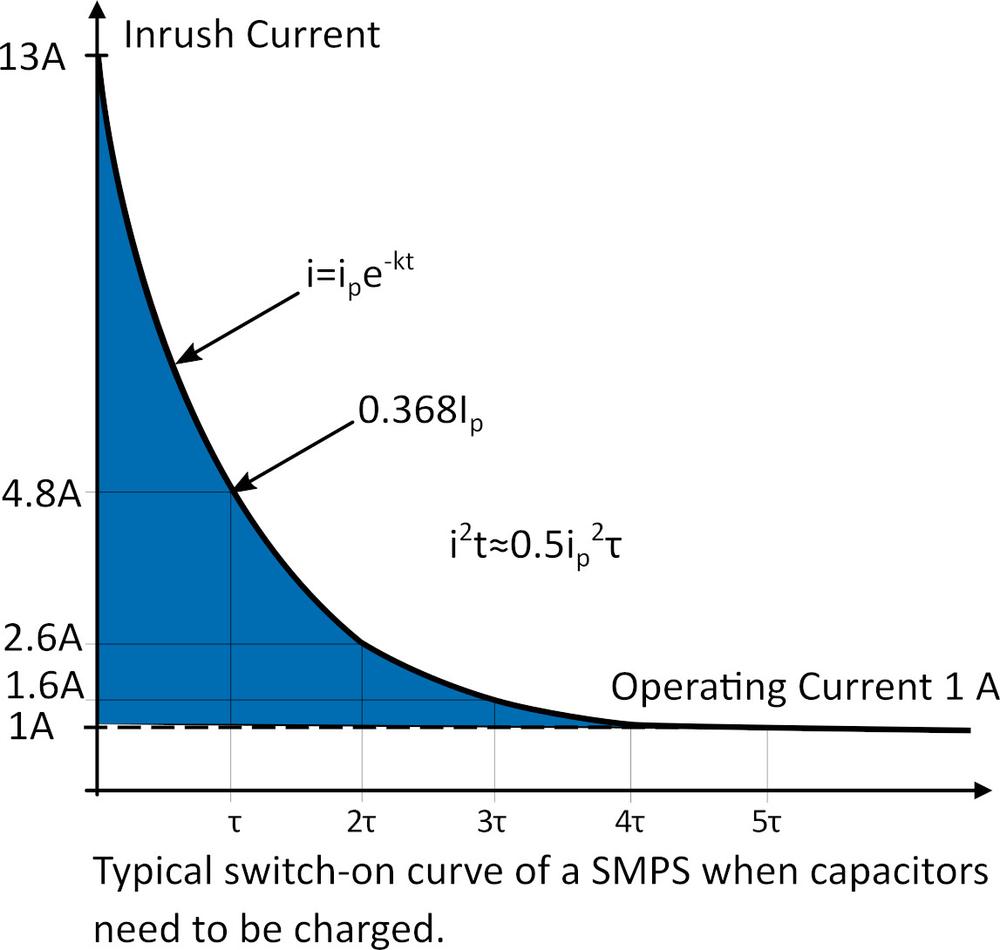
In addition, fuse has to withstand inrush currents during the whole lifetime of the device. In such a case it is necessary to use the fuse with higher i2t rating.
Application example
Let the measured inrush current has the same shape as on the picture above. Power supply will be switched on twice a day, 240 days in year, expected lifetime is 10 years.
Design uses time-lag fuse.
Ip=13A, τ=5ms then i2t=0.5*13^2*0.005=0.422A2s.
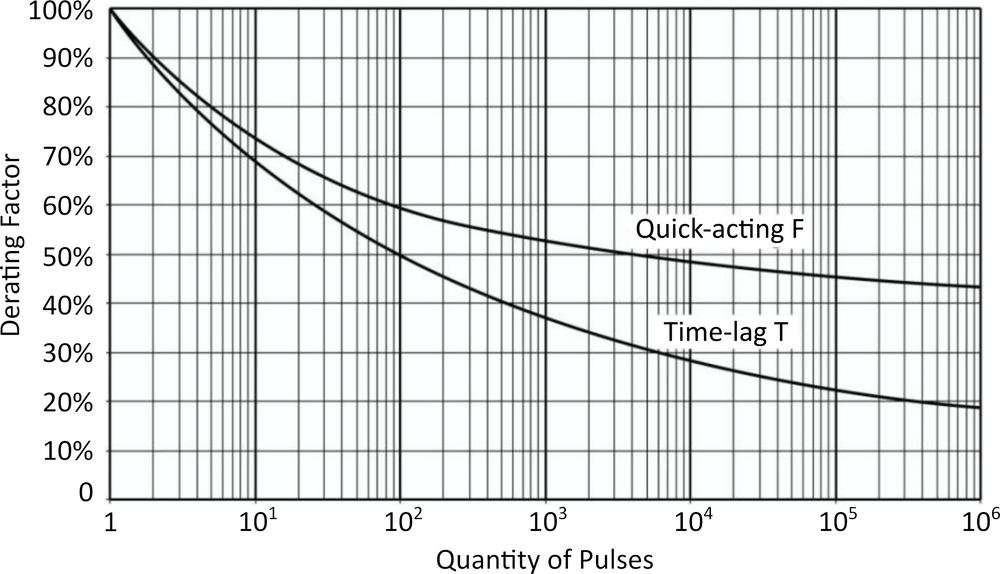
Power supply will be switched ON 4 800 times. The graph shows that the calculated i2t corresponds to only 30% of the required i2t. Required i2treq = i2t/F=1,407 A2s.
Fuse in Fuseholder
5x20mm fuses are very often placed in fuseholder. Current flowing through the fuse and the contact resistance between the fuse and fuseholder creates power dissipation. Fuseholder power acceptance at given ambient temperature has to be higher than created power dissipation.
Testing in application and verification prior to production
The factors presented here should be considered in selecting the fuse for the given application. The next step is to verify fuse performance under normal conditions and overload tests under fault conditions to ensure that the fuse will operate properly in the circuit.
If you're interested in this topic, please check out the fuses overview on our websites.
Do you like our articles? Do not miss any of them! You do not have to worry about anything, we will arrange delivery to you.













